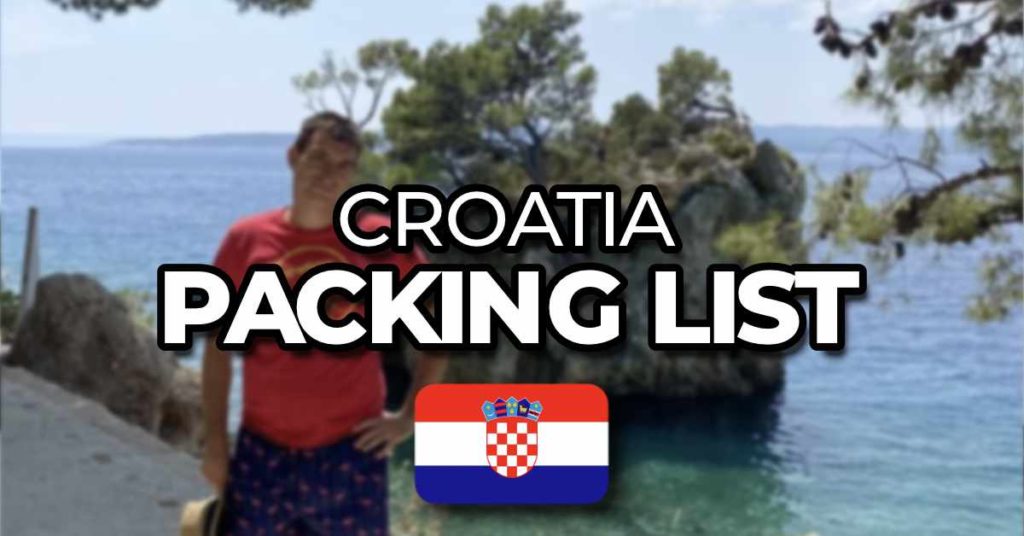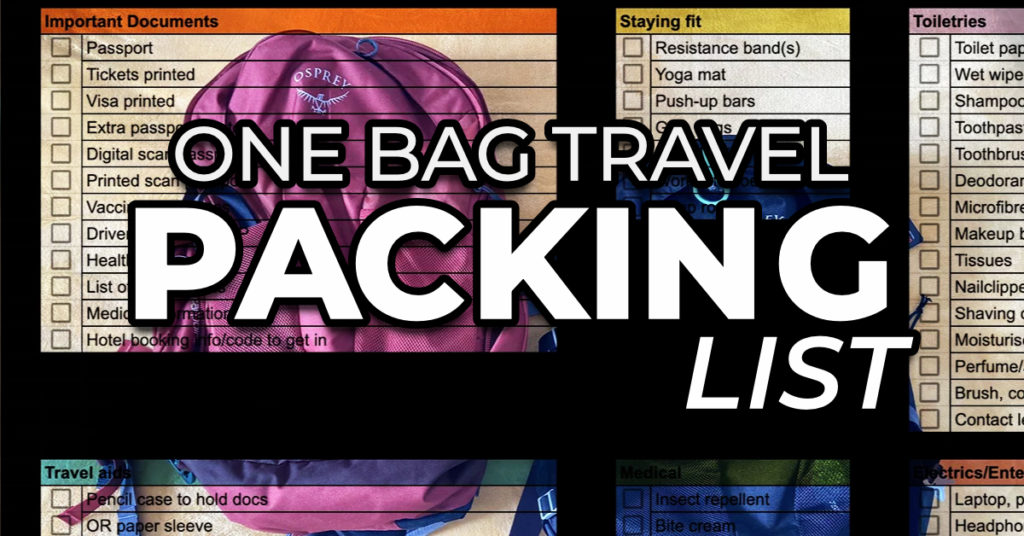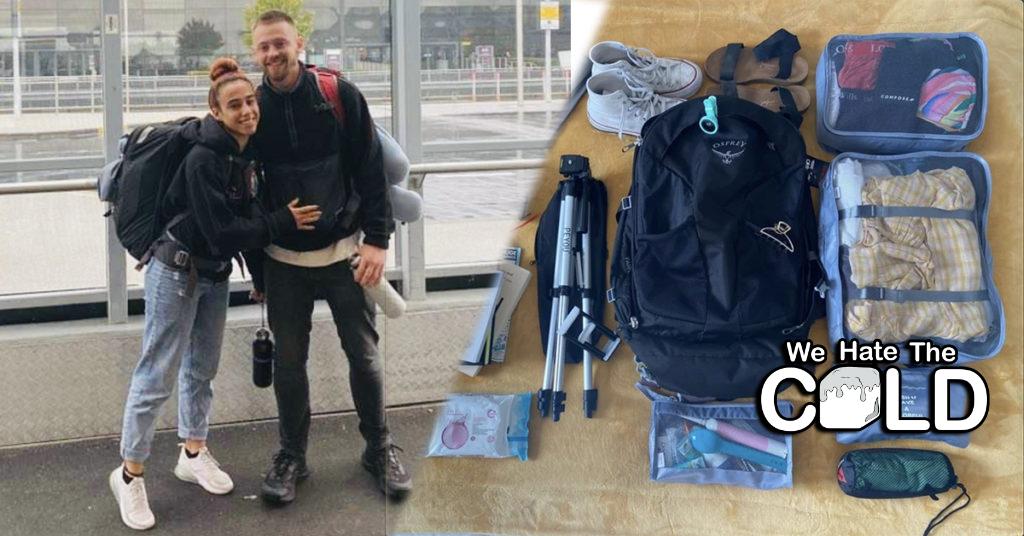Packing for Croatia is a delightful blend of practicality and anticipation. From the sun-soaked beaches of the Dalmatian coast to the charming streets of Dubrovnik and the picturesque Plitvice Lakes National Park, each destination demands its own unique set of essentials. Whether you’re a seasoned traveler or a first-time visitor, this comprehensive guide will help you curate the perfect packing list, ensuring you’re fully prepared for all the wonders Croatia has to offer. From clothing choices suitable for the Mediterranean climate to essential accessories, toiletries, and travel gadgets, we’ve got you covered. So, let’s dive into the art of packing for paradise and set you on the path to an unforgettable Croatian experience.
The Ultimate Men’s Packing List for Croatia during Summer
- 1-2 shirts per day
- 1 underwear per day
- 1 swim trunks
- 3-4 pairs of socks
- 1 pair of short linen pants per 3-4 days
- 1 belt
- 1 pair of flip-flops
- Sturdy footwear
- 1 pair of nicer shoes
- 1 pair of lightweight sneakers
- Beach hat
- Sunglasses
The Ultimate Women’s Clothes Packing List for Croatia during Summer
- 1-2 swimsuit
- 1 underwear per day
- 1 bra per 3 days
- 3-4 pairs of socks
- 2 leisure clothes
- 1 finer dress
- 1 beach cover-up (tunic)
- 1- 2 tank top and shorts combo
- 1 fit of adventure clothes
- 1 pair of flip-flops
- 1 pair of nicer shoes
- 1 pair of sturdy footwear
- Beach hat
- Sunglasses
- 1 linen beach bag or tote
The Ultimate Men’s Packing List for Croatia during Winter
- 1 undershirts per day
- 1 underwear per day
- 1 pair of socks per day
- 1-2 t-shirt
- 1-2 sweater
- 1 pair of long pants per 3-4 days
- 1 belt
- 1 pair of finer Shoes
- Sturdy footwear that is waterproof
- 1 warm jacket
- 1 raincoat
- Umbrella (if needed)
- Scarf
- Winter cap
- Mittens (for extra warmth)
The Ultimate Women’s Clothes Packing List for Croatia during Winter
- 1 undershirts per day
- 1 underwear per day
- 1-2 bras
- 1 pair of socks per day
- 2 sweater
- 1 finer dress
- 1 pair of nicer shoes
- 1 pair of boots
- 1 pair of jeans
- 1 warm jacket
- Umbrella (if needed)
- Scarf
- Mittens (for extra warmth)
- Winter Cap
Important Documents
- Passport (Non-EU citizens) ID for EU citizens
- Accommodation booking documents
- Tickets/boarding pass
- Driver’s license (if you intend to rent a car)
Toiletries
- Deodorant
- Shower gel
- Shampoo
- Tooth Brush
- Body lotion
- Conditioner
- Face cleaner
- Face cream
- Wet wipes
- Perfume
- Brush or comb
- Shaving cream and shaver
Items you should have but you can also buy or rent them at the destination
- Beach Towel
- Umbrella
- Hat
- Sunscreen
- Hair dryer
- Iron
Electrics/Entertainment
- Adapter/Converter
- Book
- Tablet
Finances
- Euro cash
- Credit/debit card
- Revolut card
Extra items depending on the type of trip
Coast and Islands
- Mosquito repellant
- Sunscreen
- Sunglasses
- Beach Towel
- Beach Accessories
- Snorkeling Gear
- Hat
- Cash in Euros
- Emergency Cash
- waterproof phone case
- beach shoes
Cities and excursions
- Different footwear for the city and for an excursion
- Shoulder Bag
- Long pants (for exclusive restaurants and churches)
- Flip-flops
Continental Nature
- Bug spray
- Raincoat
- Backpack
- Extra socks
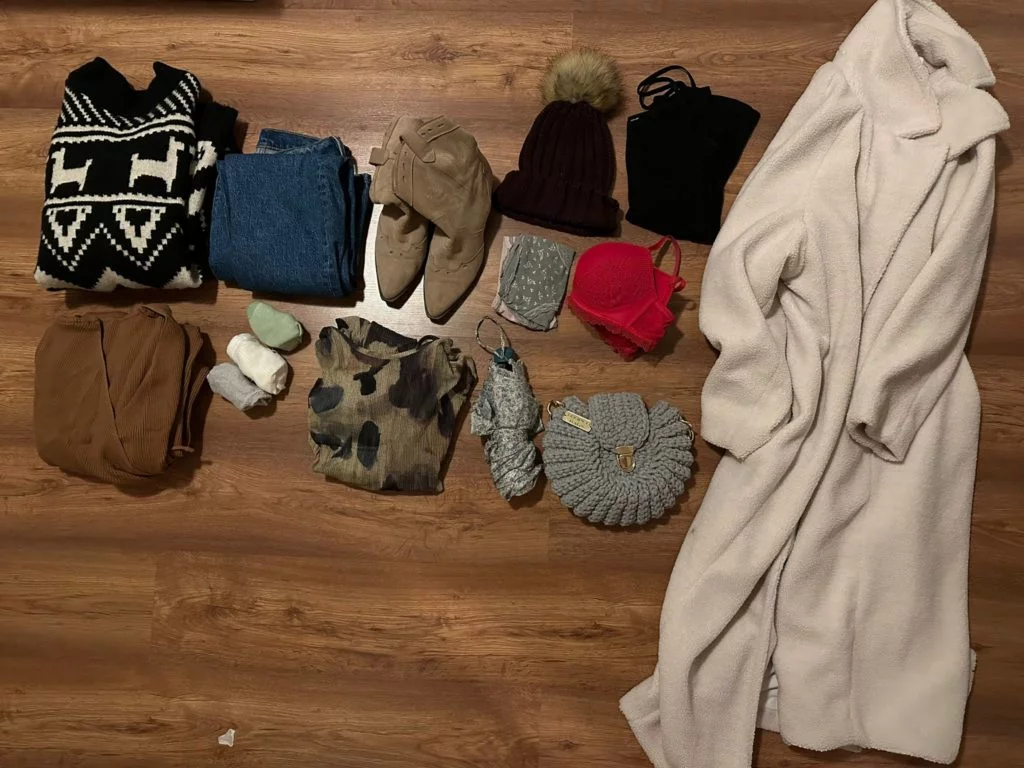
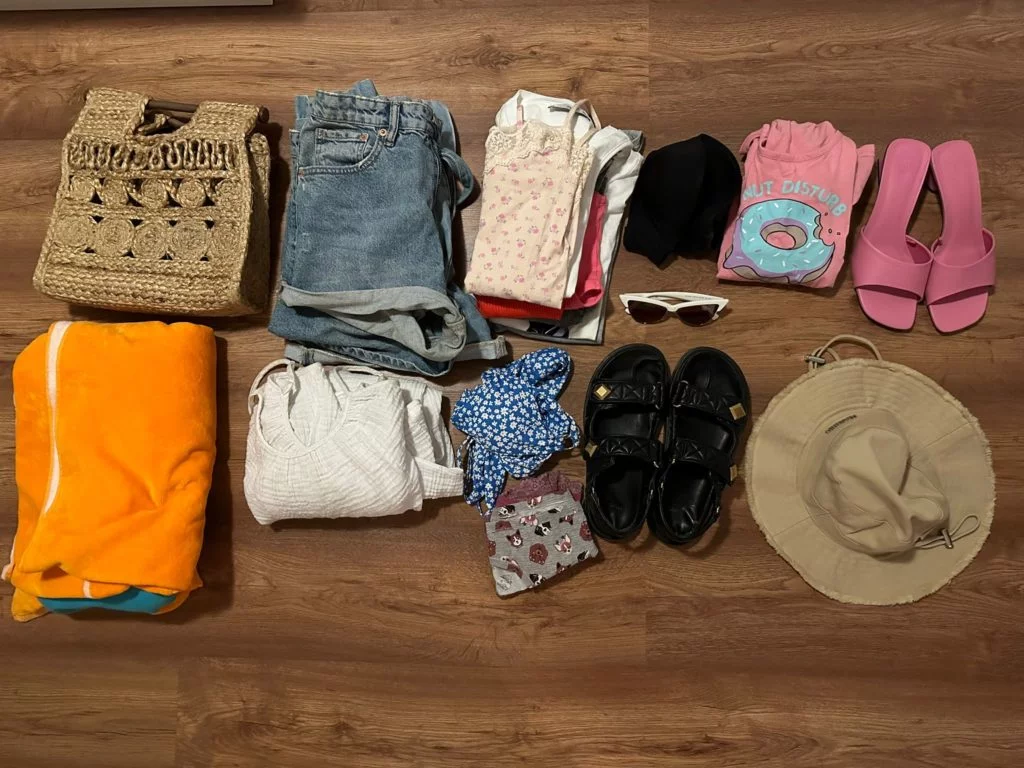
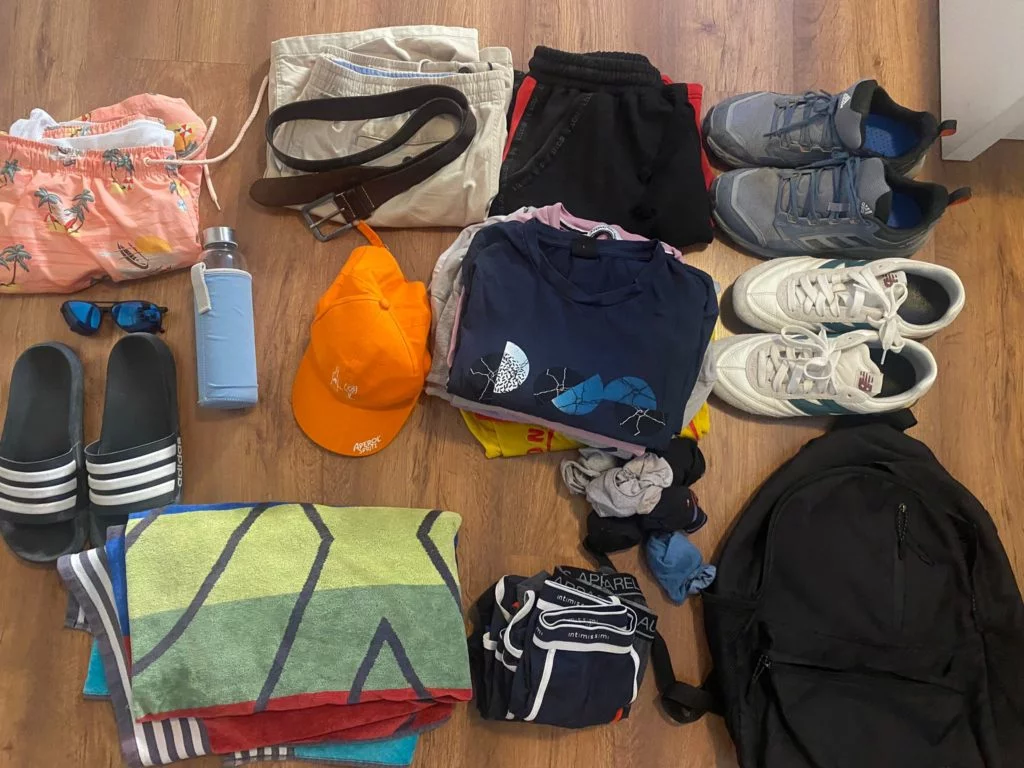
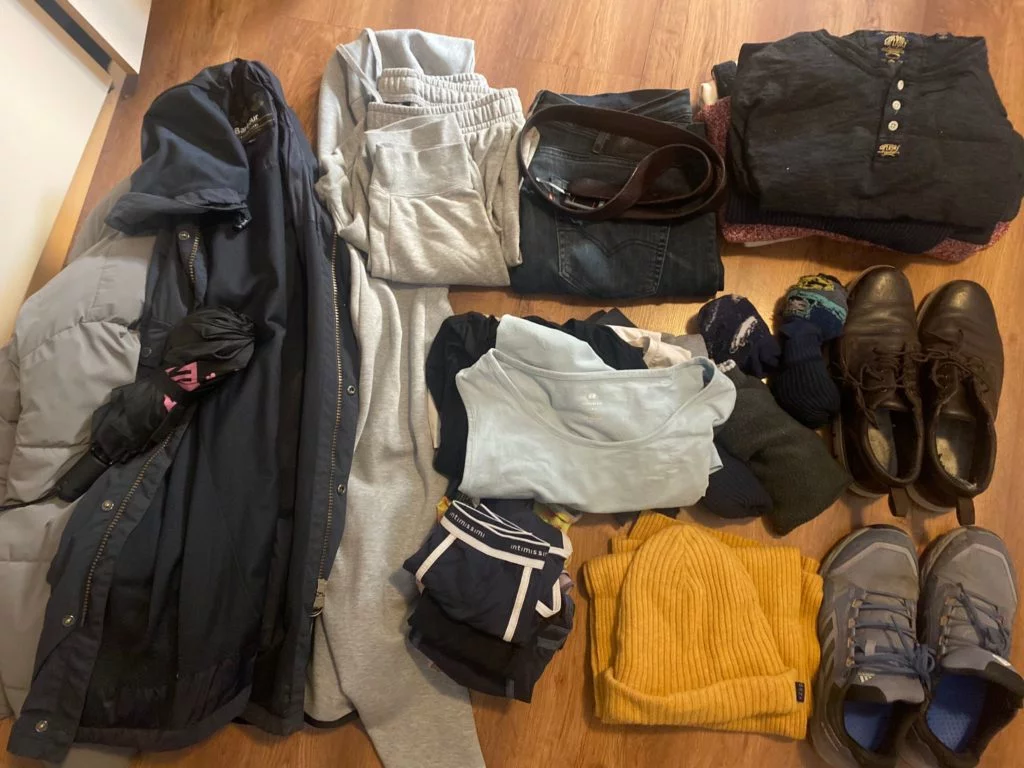
Exploring Croatian Culture: Dressing to Impress, but Keeping Comfort in Mind
Croatian culture places a significant emphasis on personal appearance. For many Croatians, casual clothing isn’t the go-to choice when heading out, whether it’s for a drink at a local bar or a night on the town.
To be honest, nobody here really cares about your clothing choices or will turn you away from anywhere just because you’re dressed casually. So, feel free to dress in whatever makes you comfortable.
It is only important to focus on being respectful and maintaining a decent appearance. Dressing in Croatia is quite similar to how it is in other countries. You wouldn’t wear hiking gear to a restaurant in most places, and the same principle applies here.
In essence: while Croatians do take pride in their appearance, your comfort and respect for local customs should guide your choice of clothing during your visit. Dress in a way that makes you feel comfortable and suits the activities you have planned.

Dressing Etiquette in Croatia | What is appropriate to wear in Croatia?
The dominant religion in Croatia is Christianity, specifically Catholicism. When visiting churches, it is important to adhere to the clothing etiquette, which requires covering your knees and shoulders.
While long pants are preferred in churches, they are not always necessary, especially during the summer months. This same dress code applies to most restaurants, with a few exceptions for beach bars and similar casual establishments, you don’t have to adhere to the black tie dress code, I personally just wear a polo shirt with short linen pants or a casual t-shirt.
While on the beach, all types of swimwear are appropriate, including thongs and speedos. However, it’s important to note that nudity is generally not allowed except in designated nudist beaches.
Planning Your Croatia Trip During the Sunny Months
Croatia is a very hot country from June to October, so make sure to pack plenty of lightweight clothes, and don’t forget your sunscreen, sunglasses, and a hat.
The Croatian summer brings scorching temperatures(up to 36°C), making long sleeves and pants unnecessary. For example, I wore long sleeves during the evening only one night this whole summer. Rarely will you encounter cooler weather during this time, but occasional rain showers can surprise you. Therefore, it’s wise to keep an eye on the weather forecast before departure. Even if a hint of rain is in the forecast, packing an umbrella or a light raincoat can save the day. The silver lining? Even summer rains are warm and refreshing, I enjoy swimming in the sea during the rain but you have to be careful of thunders as they can strike you in the sea as well.
When you’re planning sightseeing excursions, be prepared to sweat – a lot. Packing two short-sleeved shirts per day is advisable, and the same rule applies to underwear. When it comes to pants, lightweight linen material is the best option. The Croatian summer essentials include sunglasses, a hat, and sunscreen, especially if you’re coming from colder regions.
The Croatian sun is intense, and without proper protection, sunburn is a real risk, I learned that the hard way, even if you wish to get tanned be safe. Don’t forget to stay hydrated; carrying a reusable glass or metal bottle in your travel bag is a good idea. Croatia’s tap water is safe to drink and really good if you ask me, so you can easily refill it when needed.
During the summer, the most dominant weather condition to be aware of is intense heat. The heat combines strong sunlight with high humidity, making breathing a bit challenging and causing heavy sweating. Even on breezy days, you can still get sunburned, even if you don’t feel the burn on your skin as much, so sunscreen is non-negotiable if you can’t avoid the sun. Cloud cover doesn’t always provide adequate protection; sun rays can penetrate and harm your skin.
Lastly, you probably won’t need a hair dryer, as the sun quickly dries your hair. However, if you have sensitive hair, encounter strong winds, or simply prefer using one, check with your accommodation, as most hotels and apartments in Croatia provide hair dryers in the rooms.
What to take on the beach with you?

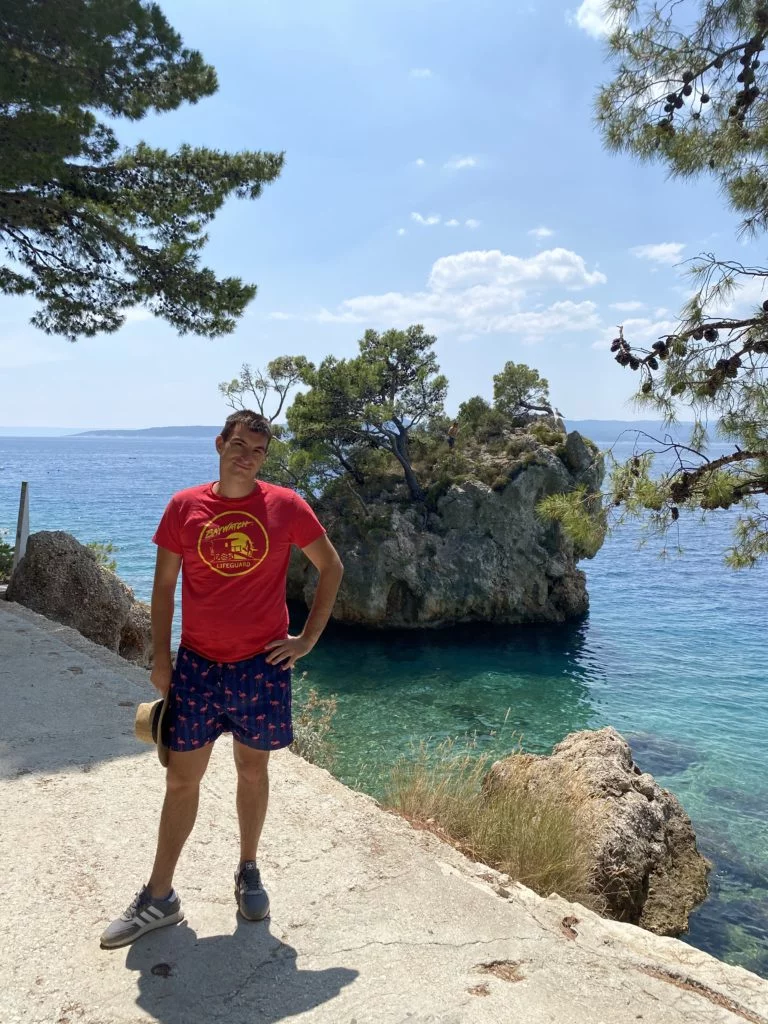
Buy sunscreen based on your skin type and activity level. For those aiming to tan, a lower SPF (around 15) will suffice, while those seeking protection should opt for a higher SPF (around 50). Some people like me don’t use it at all because I like to go swimming in the evening and avoid the sun but if you plan to be in the sun longer and during high sun, which is from 10 am to 6 pm you really should be careful. Always apply sunscreen to your shoulders and face first.
And of course don’t forget your swimwear, the most common swimwear choices for women are bikinis and one-pieces, while for men, swim shorts are the typical option, a beach towel, maybe a snorkeling googles and a floating mattress or a beach ball. But always check with your accommodation if they rent beach towels or if you can buy them at your destination since they can take up a lot of space.
The most common footwear for beaches includes flip-flops, Havaianas, sandals, and sliders. You can also use these for getting around in cities or towns, but they are not suitable for nature exploration. If you are not experienced with coastal terrain, I would recommend getting water shoes. There are several hazards to be aware of in the sea, such as sharp rocks, broken glass, sea urchins, and certain types of seaweed, which can potentially disrupt your vacation experience.
Now, you’re well-prepared for your sunny Croatian getaway!
This is me at the beach, always with a hat.
Navigating Croatia’s Winter: Unpredictable Weather and Seasonal Variations
While summer in Croatia is relatively consistent across all regions with slight variations, the same cannot be said for winter. Continental Croatia experiences a very different winter compared to the coastal areas.
When it comes to Croatia’s seasons, it’s essential to understand that autumn and spring here are somewhat elusive in coastal areas. These transitional periods can feel like a blink of an eye, while continental areas are more regular in that regard. You might find yourself wearing short sleeves and taking a dip in the sea on a sunny Monday, only to reach for a coat and sip cocoa by Friday.
Winter in Croatia, on the other hand, can be quite demanding, particularly if you’re near the coast. While the thermometer might read a modest 5°C, the biting cold wind known as the “Bura” can make it feel like a bone-chilling -5°C. Locals often say it “gets into your bones.” However, if the “Bura” isn’t blowing, the weather can be considerably more pleasant. Unlike the predictably warm summers, winters on Croatia’s coast are characterized by greater weather variability, while in continental areas the temperatures can be a lot lower.
When traveling during winter, it is recommended to bring two jackets: one that is a bit thinner, acting as a raincoat, and another thicker one for colder and windy conditions (preferably waterproof). In Croatia, when it rains, the accompanying wind, known as ‘Jugo,’ typically comes from the south and is relatively warm. Therefore, a thick jacket is not necessary during these times. There are only rare instances when there is a sudden transition from ‘Bura’ (cold north wind) to rain, resulting in colder conditions during rainfall. However, these days are infrequent, occurring only around two times a year on average.
Regarding pants, your best option is jeans, as they provide sufficient protection from the cold that you’ll encounter. In continental areas, it’s advisable to carry thick pants that can also withstand snowy conditions, as temperatures there during winter are significantly lower.
When it comes to snow, it’s a rare sight along the coastal regions, with occurrences happening once every few years. In contrast, continental areas experience more frequent snowfall. While Croatia does have some ski resorts, many Croatians opt to ski in neighboring countries for more extensive facilities and better skiing conditions.
But for example, there are beautiful sites for those who like winter magic as I do, two years ago I went to Plitvice lakes“ during winter and I really loved it, I wore regular snow gear.
If your winter travels take you to continental areas, be sure to check the snowfall forecast. In cases where snow is unlikely, consider bringing rain boots if you plan to explore the countryside, as it can get muddy, especially in foggy regions like Slavonia. Along the coastal areas, a thick jacket and a sweater should suffice to keep you cozy during the variable winter weather.
In summary: Croatia’s winters can be quite diverse, with fluctuating temperatures and occasional pouring rainfalls, making it crucial to pack appropriately for your specific destination within the country.

Suitcase vs Backpack for Croatia
Suitcase or Backpack? If you’re traveling during the winter, it’s advisable to bring a suitcase, especially if you need extra clothing like jackets. However, for shorter stays or when planning excursions, a backpack can be a convenient choice. Additionally, having a handbag or using the backpack for day trips or the beach is recommended.
Packing Tips for Exploring Croatia’s Natural Beauty
Croatia boasts diverse natural beauty, and preparing for a continental visit is not the same as going to the beach. Continental areas experience colder winters with more frequent snow, while in the summer, coastal areas offer the refreshing sea, also if going hiking make sure you are well-equipped.
Slavonia’s Unique Charm:
If you’re planning to explore Slavonia, be prepared for hot summers and a landscape characterized by mud and swamps. While Slavonia may lack the cooling respite of beaches, it’s a region steeped in history and culture. Spring is an ideal time to visit when the weather is milder. Pack sturdy boots and ample bug spray for this marshy terrain.
Coastal Croatia’s Diverse Landscape:
The coastal regions of Croatia offer a different kind of natural beauty. Coastal Croatia, especially in the southern part, is known for its rocky landscapes. In contrast, Istria boasts lush forests and is renowned for truffle hunting. The southern region is famous for its islands and towering mountains. Make sure to pack mosquito spray if traveling during summer.
Island Exploration:
When visiting islands, you can either take day trips from larger cities like Split, Zadar, or Dubrovnik or make one of the islands your base and explore the surrounding ones. Remember to carry a large bottle of water when venturing to smaller islands, as freshwater access can be limited, and beaches often lack showers. Also, bring a change of clothes if you plan to dine in a restaurant. While most seaside establishments allow guests in swimwear, wearing regular clothing can be more comfortable or you can just pack your own food. Also when going island hopping it is wise to bring a waterproof phone case.
Hiking Precautions:
If you intend to hike, especially during the summer, it’s crucial to wear appropriate hiking shoes and long pants(for snakes), even if they may feel warm. Always go with a guide or inform someone about your hiking plans. Each summer, tourists venture into rugged terrain wearing flip-flops, often requiring mountain rescue teams’ assistance due to a lack of communication or preparation. Responsibility is key when exploring Croatia’s wilderness. A few times I went hiking I always went with someone who knows the trail.
Water Safety:
Swimming in Croatia is wonderful, but be aware of strong water currents that are stronger the further from the coast you are. These can be perilous, and experienced swimmers often train for years before attempting island-to-island swims, and stay within designated zones.
National Park Adventures:
If you plan to visit national parks like Krka or Plitvice, ensure you have appropriate footwear, such as hiking shoes, due to slippery trails. Some hiking may be involved, so proper shoes are essential to prevent injuries.
In conclusion, Croatia’s natural beauty offers a wide range of experiences, from marshy plains to rocky coastlines and lush forests. By packing wisely and respecting the environment, you’ll be well-prepared for a memorable exploration of Croatia’s captivating landscapes.
Always carry water with you, a travel pillow, and some entertainment such as a book or tablet, especially when traveling by bus to these destinations. You can also bring your own food if meals are not included in your tour, but there are also restaurants available at national parks.
Managing Money in Croatia
As of January 1st, 2023, the Euro is the official currency of Croatia. To ensure a smooth financial experience during your visit, you should always have Euros with you.
1. Always Carry Euros:
The euro is the only accepted currency in Croatia. While you can exchange other currencies at banks or exchange offices, it’s advisable to have Euros on hand. Exchange rates in these facilities may not be favorable.
2. Utilize Euronet ATMs:
EuroNet ATMs are readily available and can be a convenient way to access cash. However, for certain transactions like hotel check-ins, having a credit card is often necessary as a guarantee. Some establishments may not accept Revolut for this purpose, although you can use Revolut for everyday transactions.
3. Credit Card Usage:
In larger cities, most restaurants and shops accept credit cards. However, there may be exceptions, so it’s wise to inquire beforehand if you plan to pay by card. In contrast, smaller towns and islands may have limited credit card acceptance. In such cases, it’s essential to have cash readily available, as ATMs may not be easily accessible, As it happened to me during my stay at my holiday house on Hvar, I went to a restaurant and forgot to bring cash. Unfortunately, the only ATM in the village was not working. Most credit card types are widely accepted in Croatia. However, it’s worth noting that in some cases, certain restaurants or hotels may not accept American Express, although this is a relatively rare occurrence.
By being prepared with both Euros and a credit card, you can confidently navigate Croatia’s financial landscape, whether you’re exploring vibrant cities or charming coastal towns.
Efficient Travel in Croatia: Your Transportation Guide
Exploring the vibrant cities and stunning landscapes of Croatia requires a reliable and convenient means of transportation. The bus or rent-a-car is your best option, but here are also others:
1. Ride-Sharing Apps: Uber and Bolt
When navigating Croatian cities, consider using ride-sharing apps like Uber and Bolt. These services offer both reliability and cost-efficiency. Notably, most of taxi drivers in Croatia are also Uber drivers, reducing the risk of scams. Additionally, you can check with your accommodation for airport transfer services, often a convenient option.
2. “Next Bike” for Urban Adventures
For city exploration, the “Next Bike” application is a fantastic choice. It allows you to rent a bike for an affordable fee, offering an excellent way to experience the city at your own pace. Simply use the app to pay and unlock your bike. For example, you can rent a bike for 30 minutes for just €0.66 or opt for a weekly or yearly subscription.
3. Inter-City Travel: Buses and Carpooling
If your journey takes you between cities, buses are the most economical option. Flixbus is a popular choice for affordable inter-city travel. Alternatively, you can explore carpooling through the BlaBlaCar app, sharing rides with other travelers.
4. Train Travel: A Scenic Experience
Though trains may take longer than buses for inter-city travel, they provide a scenic and comfortable journey through the Croatian countryside. If time allows, taking a train can be a delightful way to see the landscape up close and at a leisurely pace.
5. Island Hopping: Boats and Ferries
For island destinations, boats and ferries are the go-to options. Renowned operators like “Jadrolinija,” “Kapetan Luka,” “TP Line,” and “Naranča” offer island-hopping services. While some websites sell tickets for multiple operators, be cautious of commissions, it’s often best to purchase tickets directly from the operator’s website. Boats also provide excellent connectivity between cities, such as the Split-Dubrovnik route, offering a picturesque alternative to bus travel. Additionally, you can find routes to neighboring countries, like the Split-Ancona line to Italy, which operates weekly.
With these transportation options at your disposal, you’re well-prepared to explore Croatia’s rich culture, history, and natural beauty efficiently and conveniently. Whether you’re meandering through historic streets or embarking on island adventures, choosing the right mode of transport will enhance your Croatian experience.
FAQ
Is Croatia a safe country?
Croatia is a very safe country. While a money bag may not be mandatory, it’s still a good practice to have one on all your trips. This way, you can keep your money and passports secure. It’s also advisable to have copies of your documents stored in a different place than your original documents. Hotel safes are generally safe but always remember to take your belongings when checking out.
Croatia is generally safe for walking around, even at night, especially in tourist areas. Throughout the year, there are police patrol cars in operation. However, in case you require assistance, the emergency call number is 112. Relax and enjoy your trip, but exercise caution and avoid taking unnecessary risks.
Should I bring electric plugs or adapters?
In Croatia, the standard Type C & F, 220V 50 Hz frequency plug is used, and there are no other options available. While some hotels may have different outlets in their rooms, this is a rare occurrence. Although you can purchase adapters in Croatia, they are not as readily available as in some other countries. Therefore, it is recommended to bring your own adapter to ensure you can easily use your electronic devices.
Should I bring medicine?
It’s a good idea to pack regular painkillers or fever-reducing medication. Additionally, having adhesive bandages (such as Hansaplast) on hand is recommended. If you have spring allergies, consider bringing your allergy medication, as pollen can be quite strong in Croatia during the spring. As previously mentioned, don’t forget to include bug spray and sunscreen in your list of essential items.
What are Croatians like?
Croatians are known for their friendliness and helpfulness. They are generally eager to assist and support you with whatever you may need. However, it’s important to note that Croatians also take pride in their culture and heritage. Being respectful and kind to the locals will likely lead to even warmer and more welcoming interactions.
What is appropriate to wear in Croatia?

A travel enthusiast with 10 years of experience in the travel industry, Lenko has traveled to all corners of the world, including America, Mexico, Japan, Thailand, Cuba, and most of Europe. His hobbies include karate and game development and the destinations that he desires to visit are Australia, New Zealand, Iceland and to revisit the fantastic Japan.
